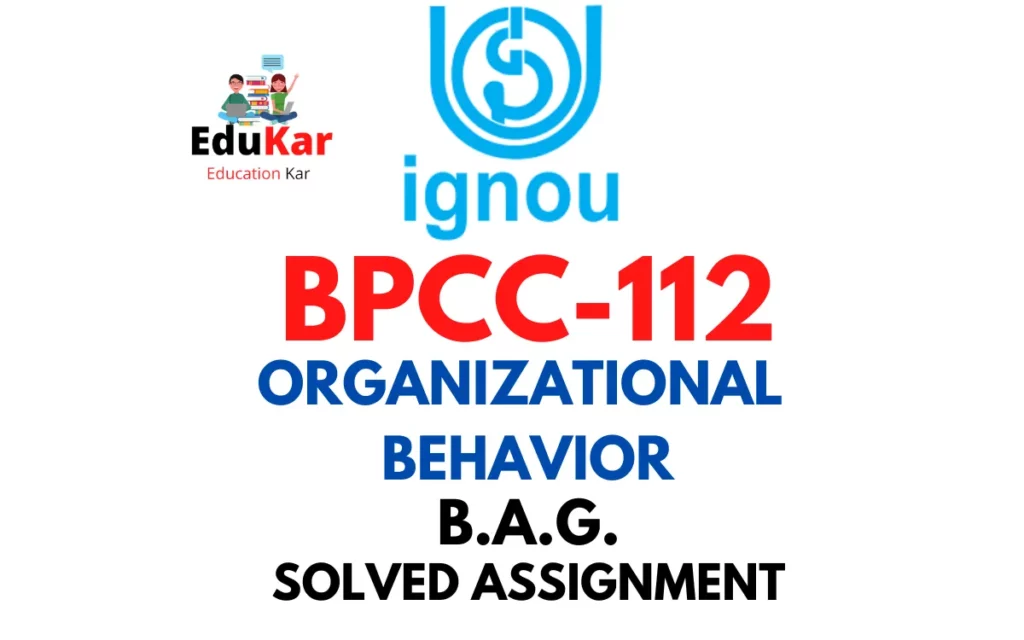Contents
- 1 Assignment A
- 2 Answer the following questions in about 500 words each.
- 3 1. Discuss the types and components of attitudes.
- 4 2. Examine the various theories of leadership.
- 5 Assignment B
- 6 Answer the following questions in about 250 words each.
- 7 3. Discuss the various organisational behaviour models.
- 8 4. Examine the various causes for organisational conflict.
- 9 5. Describe the Lewin’s.three step model to change management.
- 10 Assignment C
- 11 Answer the following questions in about100 words each.
- 12 6. Comment on the concept of ability and personality.
- 13 7. Write a note on ERG theory.
- 14 8. Define group dynamics.
- 15 9. What do you mean by BATNA and ZOPA?
- 16 10. Define stress management.
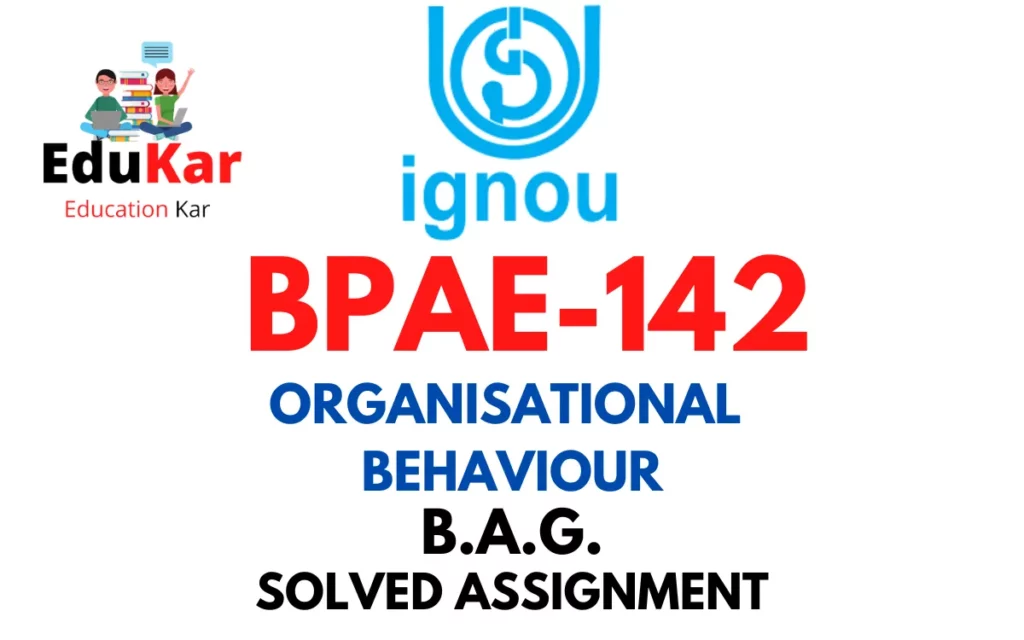
| Title | BPAE-142: IGNOU BAG Solved Assignment 2022-2023 |
| University | IGNOU |
| Degree | Bachelor Degree Programme |
| Course Code | BPAE-142 |
| Course Name | ORGANISATIONAL BEHAVIOUR |
| Programme Name | Bachelor of Arts (General) |
| Programme Code | BAG |
| Total Marks | 100 |
| Year | 2022-2023 |
| Language | English |
| Assignment Code | ASST /TMA / July 2022 & January 2023 |
| Assignment PDF | Click Here |
| Last Date for Submission of Assignment: | For June Examination: 31st April For December Examination: 30th September |
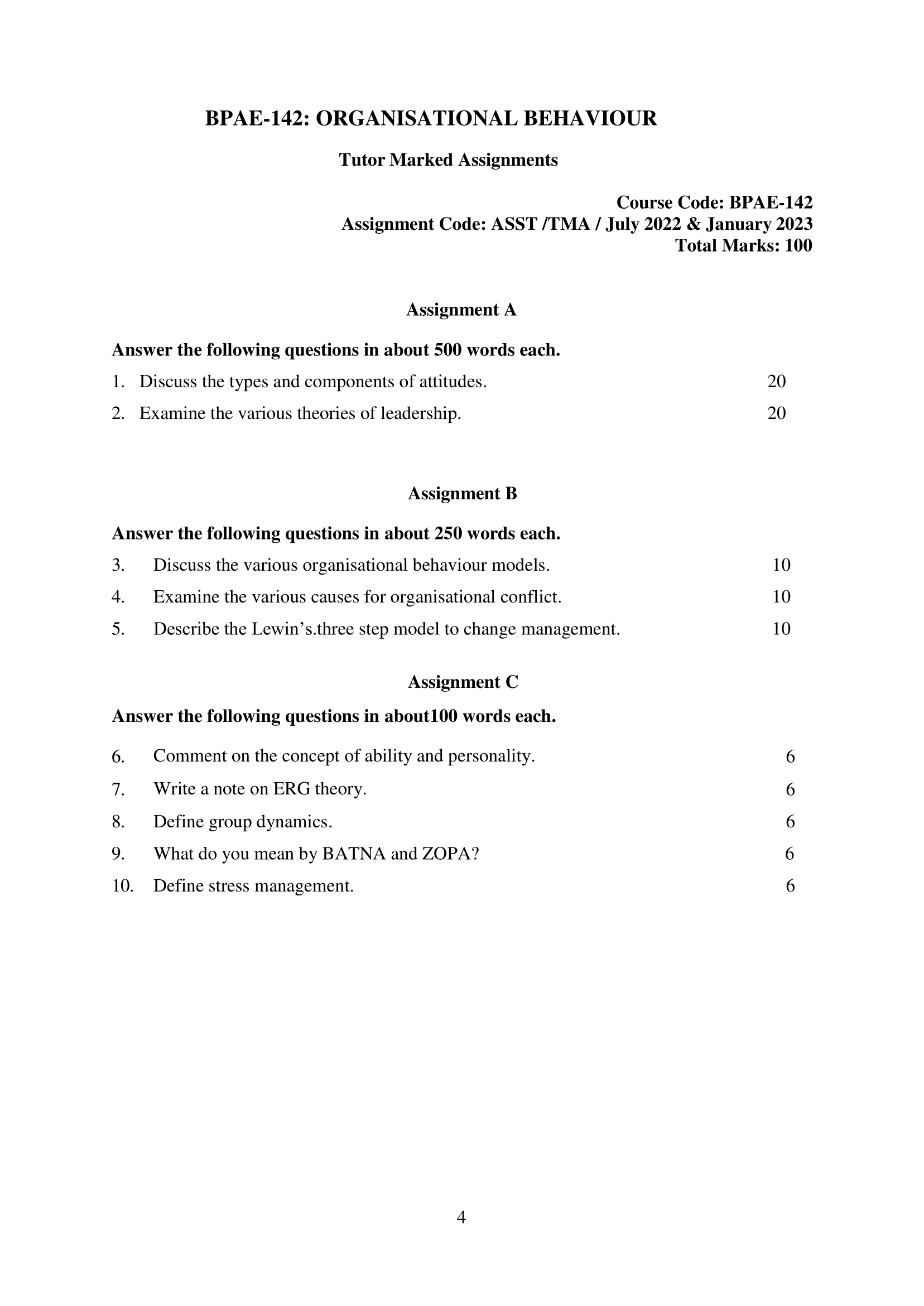
Assignment A
Answer the following questions in about 500 words each.
1. Discuss the types and components of attitudes.
Ans: Attitudes are evaluations that individuals make about people, places, objects, and events. They play a significant role in shaping behavior, thoughts, and emotions. Attitudes can be positive, negative, or neutral, and can vary in intensity and strength. In this essay, we will discuss the types and components of attitudes.
Types of attitudes:
- Cognitive Attitudes: This type of attitude refers to an individual’s beliefs, knowledge, and understanding of the world. These attitudes are based on facts and evidence and are grounded in reason and logic. For example, an individual may have a positive attitude towards renewable energy because they believe it is a more sustainable and eco-friendly option compared to traditional sources of energy.
- Affective Attitudes: This type of attitude refers to an individual’s emotional response to a particular person, object, or event. These attitudes are often driven by feelings of pleasure or displeasure and can be influenced by external factors. For example, an individual may have a negative attitude towards a particular food because they associate it with a past negative experience.
- Behavioral Attitudes: This type of attitude refers to an individual’s behavior towards a particular person, object, or event. These attitudes are based on an individual’s past experiences and are often shaped by social and cultural norms. For example, an individual may have a positive attitude towards exercising regularly because they have experienced the health benefits associated with it.
Components of attitudes:
- Affective Component: This component refers to an individual’s emotional response to a particular person, object, or event. It is often driven by feelings of pleasure or displeasure and can be influenced by external factors. For example, an individual may have a negative affective component towards a particular political candidate because they disagree with their policies.
- Behavioral Component: This component refers to an individual’s behavior towards a particular person, object, or event. It is based on an individual’s past experiences and is often shaped by social and cultural norms. For example, an individual may have a behavioral component towards wearing a face mask in public places because they believe it is the socially responsible thing to do.
- Cognitive Component: This component refers to an individual’s beliefs, knowledge, and understanding of the world. It is grounded in reason and logic and is based on facts and evidence. For example, an individual may have a cognitive component towards vaccination because they believe it is a safe and effective way to prevent the spread of diseases.
2. Examine the various theories of leadership.
Ans: Leadership is the ability of an individual to influence, motivate, and guide others towards a common goal or objective. Over the years, researchers and scholars have developed various theories of leadership, which attempt to explain how leaders can effectively influence and lead their followers. In this essay, we will examine the various theories of leadership.
- Trait Theory: The trait theory of leadership proposes that certain innate characteristics, such as intelligence, charisma, and personality, are the key determinants of effective leadership. According to this theory, individuals who possess these traits are more likely to be effective leaders. However, this theory has been criticized for its lack of empirical evidence and its failure to consider situational factors that may affect leadership effectiveness.
- Behavioral Theory: The behavioral theory of leadership proposes that effective leadership is a result of certain behaviors and actions exhibited by leaders. This theory suggests that leaders can learn and develop effective leadership behaviors through training and practice. The behavioral theory of leadership has been useful in identifying key leadership behaviors such as task-oriented and people-oriented leadership styles.
- Situational Theory: The situational theory of leadership proposes that effective leadership is dependent on the situation in which it is exercised. This theory suggests that leaders must adapt their leadership style to suit the needs of the situation and the followers. This theory has been useful in identifying different leadership styles, such as authoritarian, democratic, and laissez-faire, and how they can be used in different situations.
- Contingency Theory: The contingency theory of leadership proposes that effective leadership is dependent on the interaction between the leader’s characteristics, the characteristics of the followers, and the situational factors. This theory suggests that there is no one-size-fits-all approach to leadership and that leaders must adapt their leadership style to suit the needs of the followers and the situation. This theory has been useful in identifying the importance of matching leadership style to the situation.
- Transformational Theory: The transformational theory of leadership proposes that effective leadership is characterized by the ability to inspire and motivate followers to achieve a common goal or objective. This theory suggests that effective leaders are those who are able to communicate a compelling vision, inspire their followers, and encourage them to work towards achieving that vision. This theory has been useful in identifying the importance of charisma, vision, and motivation in effective leadership.
- Servant Leadership Theory: The servant leadership theory proposes that effective leadership is characterized by the ability to serve others. This theory suggests that effective leaders are those who prioritize the needs of their followers and work towards their well-being and development. This theory has been useful in identifying the importance of empathy, selflessness, and humility in effective leadership.
Assignment B
Answer the following questions in about 250 words each.
3. Discuss the various organisational behaviour models.
Ans: Organizational behavior (OB) models are frameworks that explain how individuals and groups interact within an organization. These models help us understand why people behave the way they do in the workplace and how organizations can manage their workforce more effectively. Here are some of the most commonly used OB models:
- Scientific Management Model: This model was developed by Frederick Taylor, who believed that work processes could be optimized to improve efficiency and productivity. The model focuses on breaking down tasks into small, repetitive steps, and then standardizing those steps to ensure consistency and eliminate waste.
- Human Relations Model: This model is based on the idea that employees are not just cogs in a machine but are human beings with emotional and social needs. This model emphasizes the importance of creating a positive work environment and building strong relationships between managers and employees.
- Contingency Model: The contingency model states that there is no one-size-fits-all approach to managing people. Instead, the best approach depends on the specific situation, including factors such as the organizational culture, the nature of the work, and the personality of the employees.
- Systems Model: The systems model looks at the organization as a whole, rather than just focusing on individual employees or departments. It emphasizes the importance of interdepartmental communication and collaboration and recognizes that changes in one part of the organization can have ripple effects throughout the entire system.
- Cultural Model: The cultural model recognizes that every organization has its own unique culture, which is made up of shared beliefs, values, and behaviors. This model emphasizes the importance of aligning the organization’s culture with its goals and strategies.
Overall, organizational behavior models are useful tools for understanding how people interact within organizations and how to manage these interactions effectively. However, no single model is a one-size-fits-all solution, and organizations must take a flexible approach to managing their workforce based on their unique needs and circumstances.
4. Examine the various causes for organisational conflict.
Ans: Organizational conflict refers to the discord that arises when the goals, interests, or values of different individuals or groups within an organization are incompatible. Conflicts can occur at various levels in an organization, including interpersonal, group, and intergroup conflicts. Some of the most common causes of organizational conflict are:
- Differences in Goals and Objectives: Conflicts can arise when different individuals or groups have different goals and objectives. For example, a sales team may prioritize meeting sales targets, while a production team may prioritize meeting production targets.
- Scarce Resources: Conflicts can arise when resources such as time, money, and personnel are scarce, and different individuals or groups compete for these resources. For example, two departments may compete for the same budget, or two employees may compete for the same promotion.
- Communication Barriers: Conflicts can arise when there are communication breakdowns or misunderstandings between individuals or groups. For example, a lack of clarity in instructions or a language barrier can lead to misunderstandings and conflicts.
- Personality Clashes: Conflicts can arise when individuals with different personalities or communication styles work together. For example, an introverted person may clash with an extroverted person, or a person who values direct communication may clash with someone who prefers indirect communication.
- Power Struggles: Conflicts can arise when individuals or groups seek to assert their power and influence within an organization. For example, a manager may use their position of authority to make decisions without consulting their team, which can lead to conflicts.
- Organizational Change: Conflicts can arise when an organization undergoes change, such as a merger, restructuring, or downsizing. Change can cause uncertainty and anxiety, and individuals or groups may resist or react negatively to the change.
- Interpersonal Conflicts: Conflicts can arise due to personal animosity or friction between individuals. This can occur due to differences in beliefs, values, or attitudes, or due to past conflicts that have not been resolved.
5. Describe the Lewin’s.three step model to change management.
Ans: Kurt Lewin’s three-step model is a widely used framework for managing organizational change. The model is often referred to as the “Unfreeze-Change-Refreeze” model, and it emphasizes the importance of preparing for change, implementing change, and consolidating the change to ensure its sustainability. The three steps are:
- Unfreeze: The first step in Lewin’s model is to “unfreeze” the organization from its current state. This involves creating a sense of urgency and a willingness to change. It is essential to communicate the reasons for the change and to involve employees in the process to gain their buy-in. This step requires leaders to identify the current organizational culture, behaviors, and attitudes that need to change to achieve the desired outcome.
- Change: The second step in Lewin’s model is to implement the change. This involves developing and implementing a plan for change. It is essential to communicate the change clearly and provide the necessary resources, training, and support to facilitate the transition. The change may involve new processes, structures, or technologies, and it should be implemented in a controlled and deliberate manner to minimize resistance and negative impacts.
- Refreeze: The final step in Lewin’s model is to “refreeze” the organization in its new state. This involves reinforcing the new behaviors and attitudes that have been established as part of the change. It is essential to embed the change in the organization’s culture and processes to ensure its sustainability. This step involves creating mechanisms to support and reinforce the new behaviors and attitudes, such as performance metrics, incentives, and recognition programs.
Assignment C
Answer the following questions in about100 words each.
6. Comment on the concept of ability and personality.
Ans: Ability refers to an individual’s capacity to perform a specific task or function. It is often measured by standardized tests and assessments that evaluate an individual’s knowledge, skills, and aptitude. Personality, on the other hand, refers to an individual’s unique set of characteristics, such as attitudes, values, and behaviors, that influence how they interact with others and the world around them. While ability and personality are distinct concepts, they are often interrelated. For example, an individual’s personality may influence their ability to work well in a team, while their ability to learn and problem-solve may be influenced by their cognitive abilities. Understanding both an individual’s abilities and their personality can be useful in various contexts, such as in education, employment, and personal development.
7. Write a note on ERG theory.
Ans: ERG theory is a motivation theory developed by Clayton Alderfer as a modification of Maslow’s Hierarchy of Needs theory. ERG stands for existence, relatedness, and growth, which are the three basic categories of human needs according to the theory.
Existence needs include basic survival needs such as food, shelter, and safety. Relatedness needs refer to the need for social interaction, relationships, and a sense of belonging. Growth needs include the desire for personal development, achievement, and self-actualization.
According to ERG theory, individuals can experience frustration or regression when their higher-level needs are not met, which can lead to a desire to fulfill their lower-level needs. For example, an individual who is unable to achieve personal growth in their job may focus on social relationships to fulfill their relatedness needs.
ERG theory also proposes that individuals can pursue needs in multiple categories simultaneously and that needs can shift and change over time. Additionally, the theory suggests that satisfaction and dissatisfaction are independent dimensions, meaning that individuals can experience satisfaction in one category of needs while still feeling dissatisfied in another.
ERG theory has been useful in explaining motivation and behavior in various contexts, such as in the workplace, education, and personal development. However, the theory has been criticized for its lack of empirical evidence and its potential overlap with other motivation theories. Nonetheless, ERG theory provides a useful framework for understanding the complexity and dynamism of human needs and motivations.
8. Define group dynamics.
Ans: Group dynamics refers to the social processes and behaviors that occur when individuals come together in a group or team. It includes the interactions, relationships, roles, norms, and power dynamics that emerge within the group and affect its functioning and performance.
Group dynamics can be influenced by a range of factors, such as the size and composition of the group, the level of cohesion and trust among members, the task or goal of the group, and the leadership style and communication patterns of the group members.
Positive group dynamics can lead to increased motivation, creativity, and productivity, as well as greater social support and satisfaction for group members. On the other hand, negative group dynamics, such as conflict, competition, or lack of trust, can lead to reduced performance, lower satisfaction, and even group dissolution.
Understanding group dynamics can be important in various contexts, such as in the workplace, education, social and community groups, and sports teams. It can help individuals and organizations create more effective and cohesive teams, foster positive relationships and communication, and promote shared goals and values.
9. What do you mean by BATNA and ZOPA?
Ans: BATNA stands for Best Alternative to a Negotiated Agreement. It is a concept in negotiation theory that refers to the best option or course of action available to a party if they are unable to reach a satisfactory agreement in a negotiation. In other words, it is the next best option to reaching an agreement, which provides a party with a benchmark to evaluate the potential outcomes of a negotiation. A party’s BATNA is important to determine because it sets the limits of their willingness to compromise in a negotiation, and helps them avoid agreeing to a deal that is worse than their BATNA.
ZOPA stands for Zone of Possible Agreement, also known as the “bargaining range.” It is the range of possible outcomes in a negotiation that both parties can agree to and find acceptable. In other words, it is the overlap between the minimum and maximum amounts or terms that each party is willing to accept in a negotiation. Identifying the ZOPA is important for negotiating a mutually beneficial agreement, as it indicates the potential for agreement and helps each party understand the other’s position. It is essential to understand the ZOPA to avoid impasse or deadlock in a negotiation, and to reach an agreement that satisfies both parties’ interests.
10. Define stress management.
Ans: Stress management refers to the process of identifying and managing stress in one’s life. Stress can have both positive and negative effects on individuals, and stress management involves taking steps to reduce the negative effects of stress while maximizing the positive effects. This can involve various techniques, such as mindfulness, meditation, exercise, time management, and communication skills. The goal of stress management is to improve an individual’s overall well-being and reduce the negative impact of stress on physical and mental health. By managing stress effectively, individuals can improve their ability to cope with life’s challenges and maintain a healthy work-life balance.
How to Download BPAE-142 Solved Assignment?
You can download it from the www.edukar.in, they have a big database for all the IGNOU solved assignments.
Is the BPAE-142 Solved Assignment Free?
Yes this is absolutely free to download the solved assignment from www.edukar.in
What is the last submission date for BPAE-142 Solved Assignment?
For June Examination: 31st April, For December Examination: 30th October

![[Solved Assignment] BPCS 185-DEVELOPING EMOTIONAL COMPETENCE (IGNOU-BAG) 2022-2023 [Solved Assignment] BPCS 185-DEVELOPING EMOTIONAL COMPETENCE (IGNOU-BAG) 2022-2023](https://edukar.org/wp-content/plugins/contextual-related-posts/default.png)
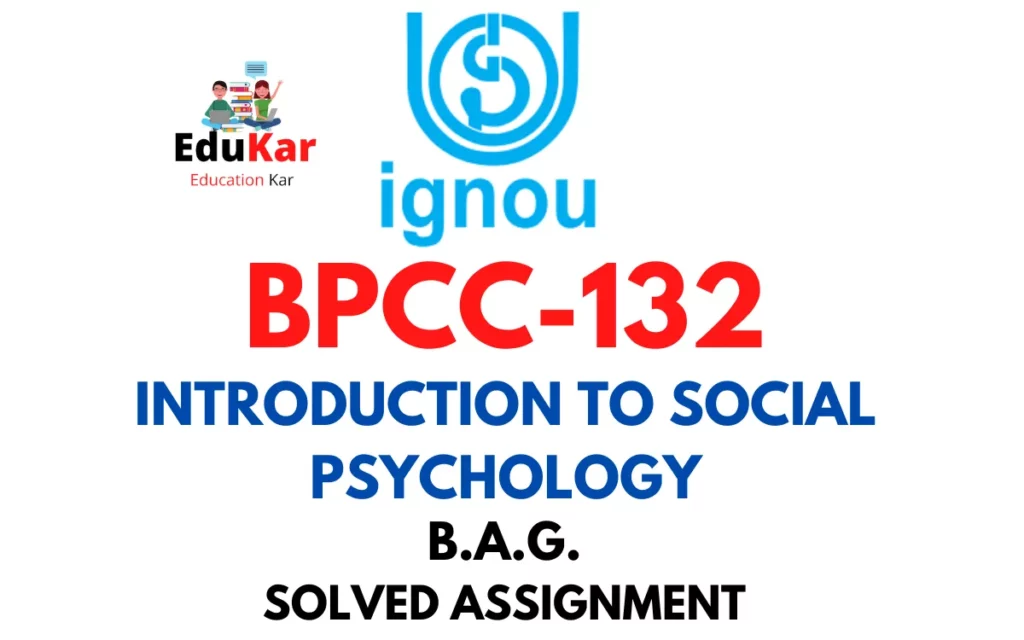
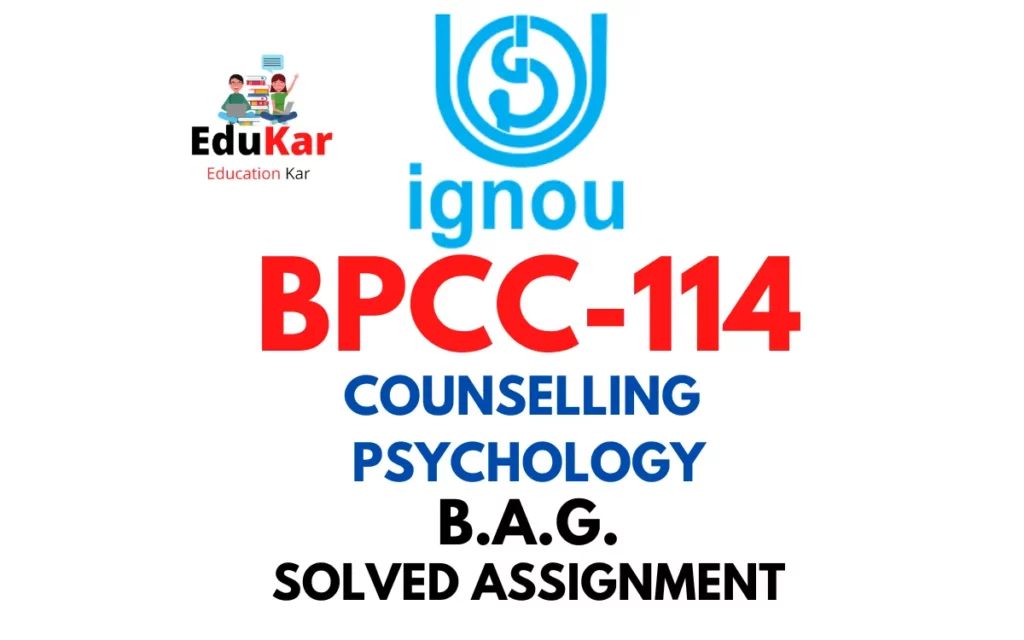
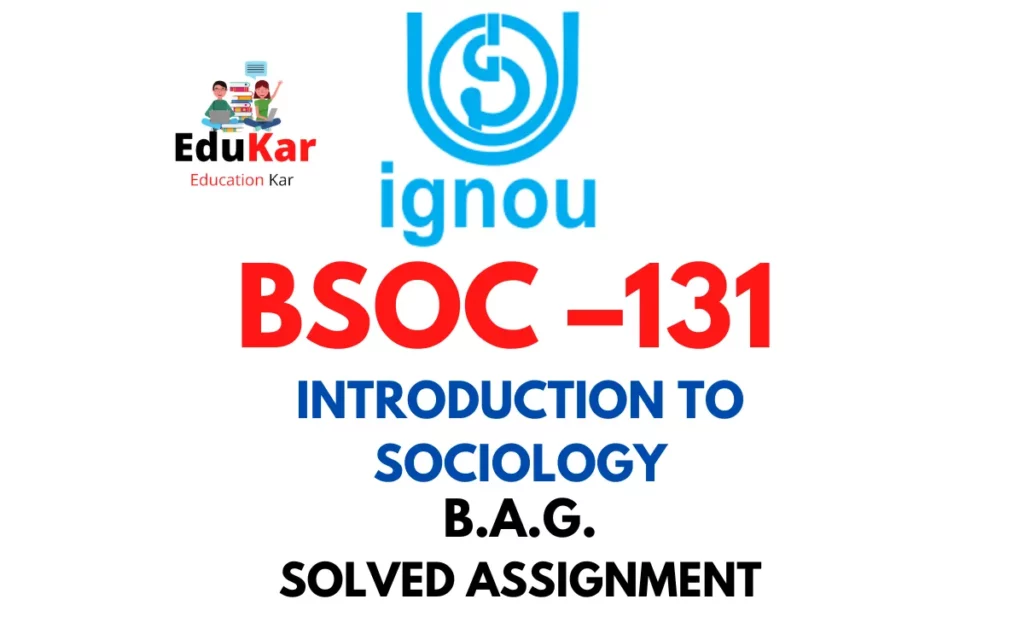
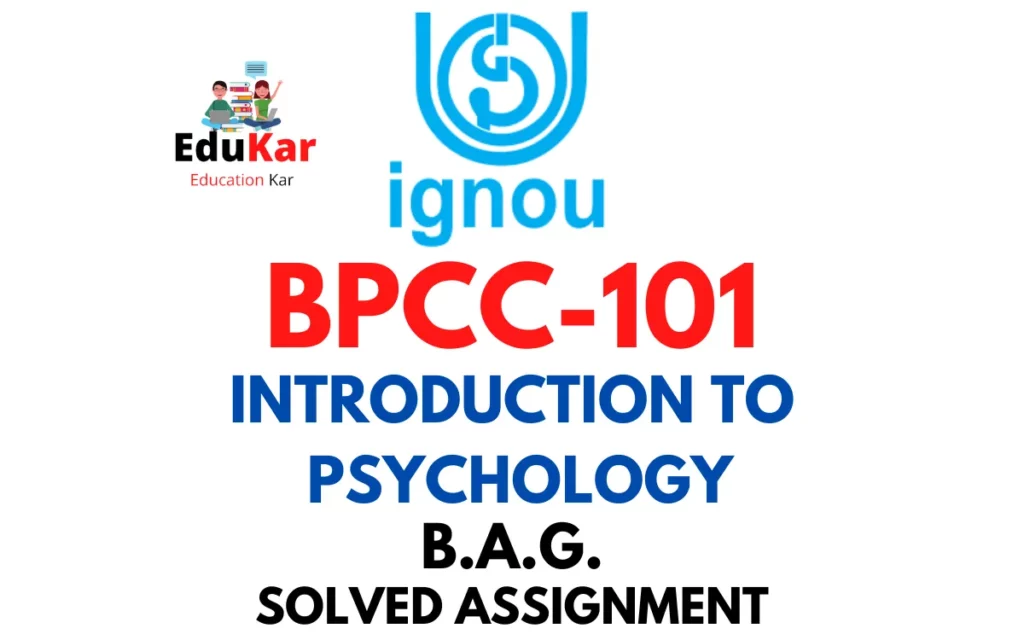

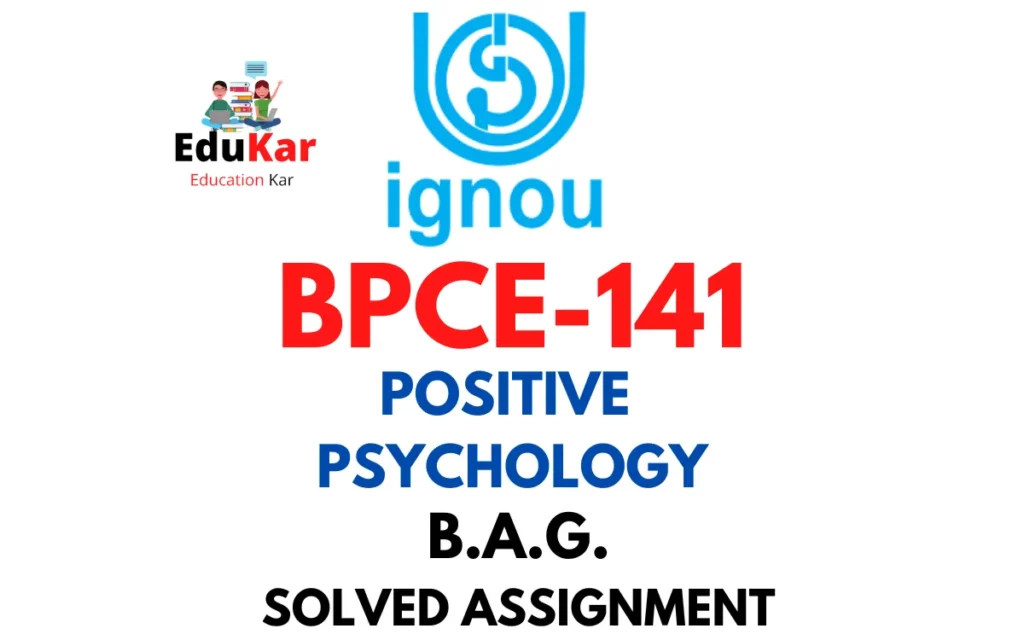

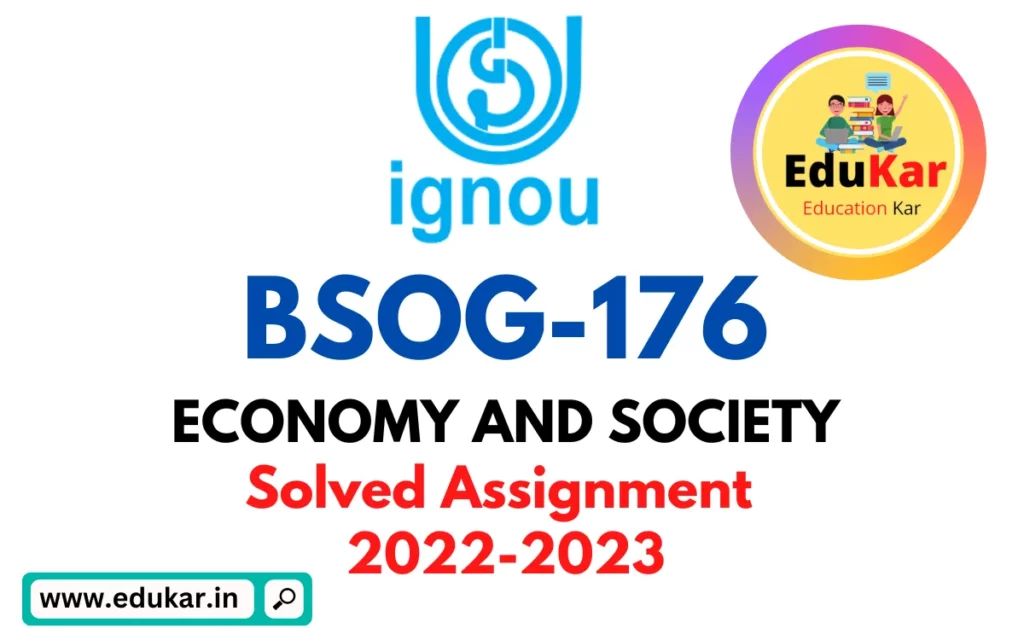



![[Solved Assignment] BPCS 188-APPLICATIONS OF SOCIAL PSYCHOLOGY (IGNOU-BAG) 2022-2023 BPCS 188-APPLICATIONS OF SOCIAL PSYCHOLOGY IGNOU BAG Solved Assignment 2022-2023](https://edukar.org/wp-content/uploads/2023/01/BPCS-188-APPLICATIONS-OF-SOCIAL-PSYCHOLOGY-IGNOU-BAG-Solved-Assignment-2022-2023-1024x640.webp)
